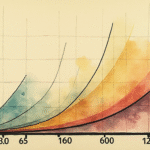The Rapid Adoption of Artificial Intelligence (AI)
According to a McKinsey research report on the state of AI in 2024, there has been a significant increase in the adoption of this technology by organizations worldwide. “Over the past six years, AI adoption among surveyed organizations has hovered around 50%. However, the 2024 report reveals that adoption has surged to 72%.”
The Evolution of HR Processes
The rapid transformation brought about by technology necessitates the evolution of human processes within organizations to adapt to this new reality. Simultaneously, HR professionals must maintain a human touch while leveraging digital tools to enhance the employee experience.
Personalized Training with AI
Today’s HR Business Partner (HRBP) can utilize digital tools, including AI, to create tailored training content that aligns with individual employee development needs. This approach ensures higher-quality training and quicker performance improvements, while also enabling real-time monitoring of resource usage and its correlation with outcomes. This empowers organizations to evolve the HRBP role, integrating these tools to improve people management in business operations.
Best Practices for a More Digital HR Approach
A digital approach, supported by AI, can significantly impact Human Resources and its business influence. Here are some best practices for evolving the HRBP role using technology:
Identifying Internal Talent
Traditionally, talent planning relies on an employee’s career history. However, this information can become outdated, especially for experiences prior to joining the company. Leveraging AI tools that scan a comprehensive profile of employees across various sources, like professional networks, can yield valuable insights and key findings for talent management, helping close significant talent gaps.
Segmenting Value Proposition
HRBPs play a crucial role in understanding how employee needs and lifestyle dynamics have evolved, as well as team dynamics, communication schemes, etc. This strategic human planning element for the business also positions HR as a human reference in the labor market. However, manually conducting this analysis is challenging without technology. By cross-referencing databases from payroll, insurance, and benefits information, valuable data can be found to provide more personalized attention to employees, building a comprehensive offering that fosters connections and reduces turnover.
Development Plans Based on “Learning Journeys”
AI enables microsegmentation of learning, adapting content and methods to the ever-changing business and individual needs. This shifts the traditional “content delivery” approach to an on-demand, individual basis based on performance. Measuring the impact of these resources on results allows for real-time adjustments, ensuring continuous effectiveness.
Labor Risk Monitoring
As new players emerge in the industrial relations field, there’s a growing need to anticipate their potential effects on workplace management. AI can develop a better understanding through cross-database analysis, constructing risk maps that anticipate the need for preparation in businesses.
Current Mexican Labor Context
In today’s Mexican labor landscape, businesses are rapidly developing and disrupting customer channels with innovative products, breaking traditional functional structures, and fostering agile cultures with cutting-edge tools integrating AI and automation. This necessitates equipping people with new skills and mindsets.
However, there’s also a social reality that doesn’t match this pace, with a polarized society, challenging economic conditions, and fundamental transformations in the labor and industrial relations world. These factors ground any initiative in reality, compelling the HR team to keep a watchful eye on both ends of this shifting pendulum.
Evolving the HRBP Role and Leadership Mindset
In this context, there’s a need for the evolution of the HRBP role and the entire Human Resources team, along with transforming leadership into a multidimensional mindset capable of integrating human labor with new technologies, creating a harmonious environment while boosting productivity.






